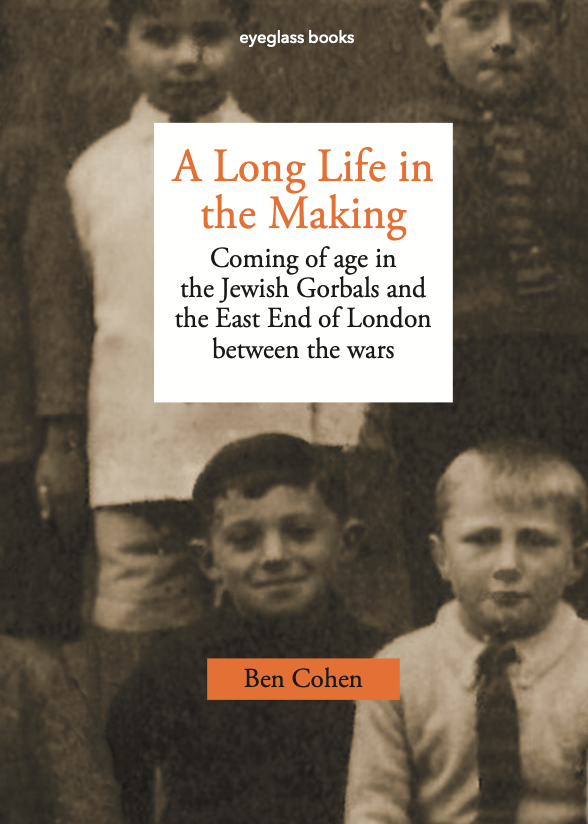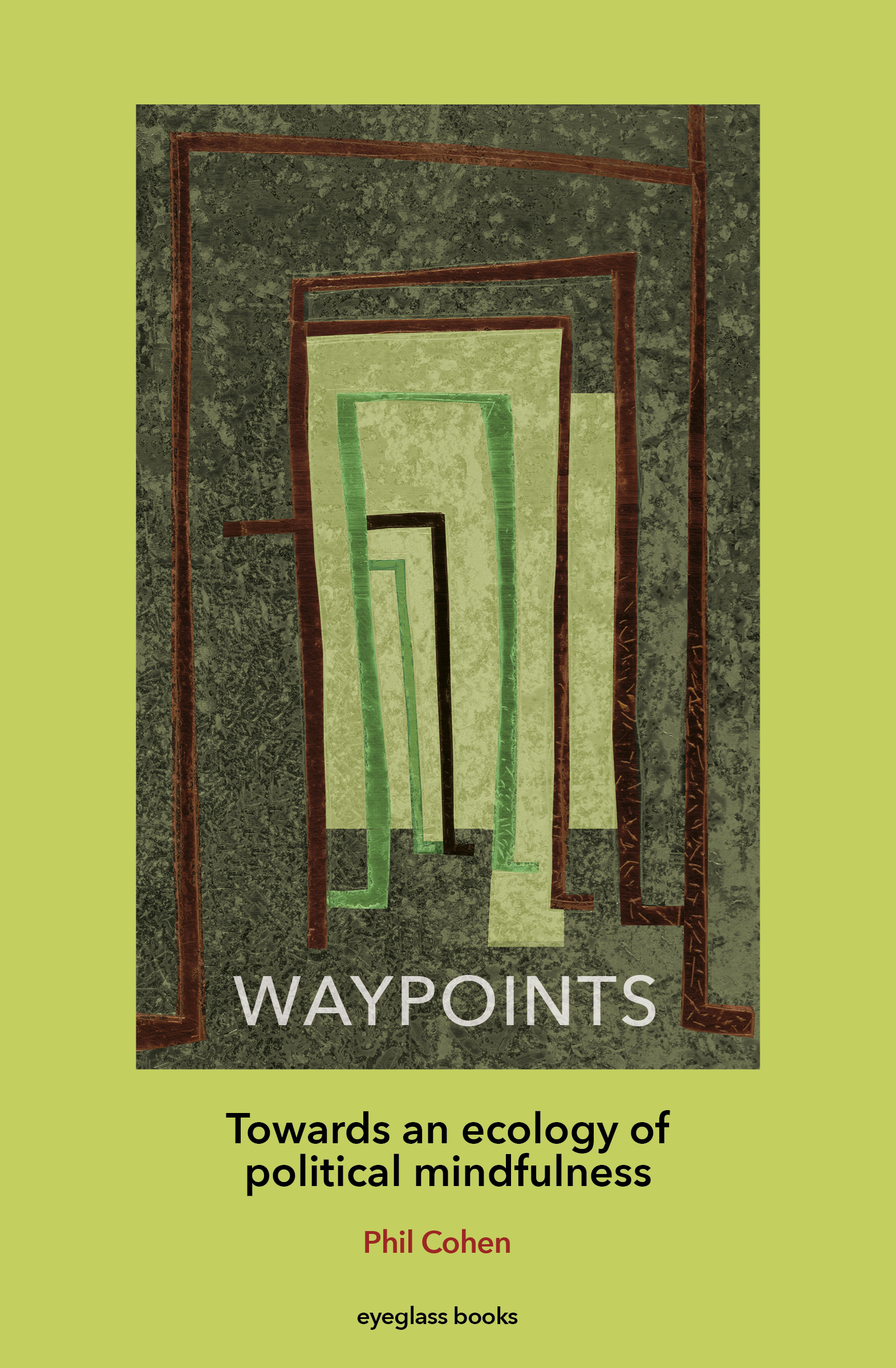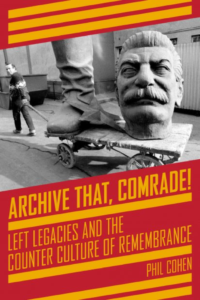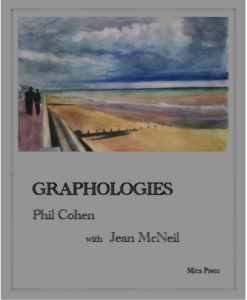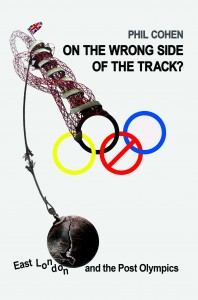This text is an introduction to Waypoints Volume 2 , a new collection of occasional writings from the last five years due to be published in the Autumn by eyeglass books.
INTRODUCTION : ON LIVING IN A GREY ZONE
Taking sides
On the day I am writing this the following happened : I heard that a friend of mine , a life long smoker, had been diagnosed with terminal lung cancer. My son was rushed to hospital with a heart attack . Russia sent missiles to destroy a residential home for pensioners in the Donetsk region of Ukraine, killing 42 and seriously injuring another 60. The case of a women raped by a police officer finally came to court , whilst 30 other sexual violence cases in the same town were not prosecuted; A Jewish cemetery in East London was desecrated for the third time this year. A white gunman opened fire in a school in a black neighbourhood in the USA, killing five children and the security guard. Across the world floods and fires linked to global warming destroyed nearly two thousand homes and made thousands of people homeless. 108 men , women and children crossed the channel in small boats seeking asylum in Britain, two died and the remainder were housed in squalid conditions pending being sent to Rwanda . Meanwhile in Ukania 38 people attempted suicide, ten succeeded, including one refugee being held in a detention centre. A report into the treatment of autistic children in residential care concluded that many of them had suffered physical abuse over many years. Another report into social inequality headlined the fact that the gap between rich and poor , in terms of health and well being, had increased exponentially since 2008. A government survey showed that 44% of the British population had experienced chronic pain for more than two years of their lives, and that 67%of school students aged between 11 and 14 experienced depression and anxiety about their future prospects.
It was not a good day at what passes for my office!. One of the questions which any such list of catastrophes raises is whether or how to scale them in importance . Obviously my son’s heart attack assumes the greatest personal significance. But it also raises a question about the current crisis in the National Health Service – he would have died if the ambulance had got there an hour later, and arrival times vary considerably from area to area. He was lucky to live where he did. Equally the lives and livelihoods of people inhabiting areas already being devasted by climate change are being literally uprooted. Each calamity is experienced asan intensely first personal singular event but it is always part of a wider political situation , albeit one not always perceived as such.
To be subjected to such a daily dose of disaster both large and small, carries with it a health warning: take sparingly unless you want to feel hopeless and helpless under the weight of the world’s oppression, or unless you have already rendered yourself immune to feeling or thinking about such events, in which case why bother to find out about them?.
What does it mean today to take arms against a sea of troubles and by opposing try to end them?. Contemporary audiences, schooled in the neo-liberal catechisms of possessive individualism, tend to be impatient with Hamlet’s vacillation and the kinds of ambivalence which immobilises him. Why doesn’t he just re-invent himself, get over it and move on ? However as soon as we go beyond existential angst at the state of the world, and try to do something concretely about it, we often find ourselves in a space where things are more complicated than simple binary oppositions : to be or not to be on the right-or left – side of history.
For example, It is easy enough , especially for those on the ‘Left’, to enumerate our current political afflictions : the climate emergency, the geopolitical drift to a new world war, the obscene concentrations of wealth and power, sexism, racism, etc etc.. And to take sides, if not arms , against them. But not only is it increasingly hard to stay with these troubles without feeling overwhelmed by their concatenation , it is even more difficult to sustain forms of collective opposition which stand a realistic chance of ending them. We can all be rhetorically on the side of the people of Ukraine in their heroic resistance against Putin’s villainous attempt to annex their country as part of a new Russian Empire. But does anyone really have a clue about what can be done to bring the war to a just conclusion ? Almost everyone is nominally enrolled in the fight against global heating , but most of us are heavily addicted to patterns of consumption which accelerate it. Those who are wealthy enough to live ‘off grid’ in their luxury bunkers will find their every comfort catered for by the entrepreneurs of ‘disaster capitalism’ , while those whose ‘anti-capitalism’ does not extend to refusing their digital devices are involuntarily implicated in the commodification of data which fuels platform capitalism’s dynamic growth.
In the new uncertainty principles which currently govern outcomes , it is not just that actions undertaken in good faith may have unintended and negative consequences ( or none at all!) but that this opens up a frame of reference in which those acting in bad faith can blur crucial distinctions between what is progressive and what is reactionary, what is in the best interests of the many and what serves to legitimate the privileges of the few , what is a moral and what an immoral economy. When such demarcations are no longer being clearly articulated in everyday political discourse and are instead replaced by euphemisms, equivocations, or disavowals, a vacuum opens up which is increasingly filled by free floating denunciatory rhetorics, often with a populist slant . Against this backdrop the current proliferation of conspiracy theories can be regarded as an understandable if delusional attempt to reinstate Manichaean moral distinctions as vectors of social and ideological challenge : to feel emboldened to call a spade a spade if only because it is being manipulated by a ‘hidden hand’.
The proponents of adversarial politics tend to hold to a somewhat similar ‘two legs bad, four legs good’’ Manichaeism; their struggle is to de-construct an imagined ‘centre ground’ through strategies of asymmetrical polarisation to either ‘Left ‘ or ‘Right’, with the aim of dissolving grey areas into a clear cut ‘black and white’ configuration of the issues. For good or ill, the messy complicated, ever shifting web of situated alliances and oppositions that constitutes the contemporary realpolitik is not easily fitted into the procrustean bed of a fixed political geography centered on binary system of representation. To call this a ‘crisis of representation ‘ is an altogether too abstract way of referring to the multiple disjunctures between the existing maps and actual territories of political allegiance in Western democracies.
A somewhat similar problematic can be found at work in the more toxic and authoritarian brands of identity politics with their moral, symbolic and doctrinaire takes on who is and who is not a victim or perpetrator of injustice. . In so far as this standpoint reduces the fluidity of social identifications to the interplay of fixed binary categories viz women /gay/ black people equals good ; male/ heteronormative/white people-equals bad , this world turned upside down tends to reproduce the emotional logics of domination even as it challenges or reverses the terms and conditions of subordination . For example it was normal practice in the anti-racist meetings I used to attend for victims of racial violence (e.g. by the police) to give graphic descriptions of their brutalisation at the hands of the authorities. This testifying was certainly therapeutic for the speakers in restoring their sense of voice and agency, but for the listeners who strongly identified with them , it was anything but. For now the boot was metaphorically on the other foot, and it was our turn to feel speechless and helpless, as we were‘beaten up’ by the interlocutor’s detailing of injuries received.
Such practices anticipated a shift in the centre of gravity of public debate over race away from a celebration of ‘multicultural values’ , mixed race relationships and the virtue signalling of cultural hybridity ( as in two tone music) towards a re-assertion of essentialised or inherited identities whose boundaries are fixed to binary racial codes. According to this world view there is no more grey zone, everything is resolvable into black and white.
In stark contrast, gender politics has moved in the opposite direction, completely uncoupling cultural and biological identities , and attempting to render the latter as fluid and mutable as the former. In what we might call the pro-nominal revolution , the binary code which hitherto sent children to separate destinies according to fixed definitions of male or female have been performatively dissolved. Now we can decide to be interpellated as s/he or him/her, we can pluralise our selves as they , or be a gender neutral me or ‘it’. Gender has thus become a major new grey zone, a site of radical experimentation as well as existential confusion and moral panic[1].
Nevertheless beyond the social plasticity of immediate modes of address, at a deeper , more intimate, level of discourse, in the body language and imagery associated with sexual roles and rules , we find binary oppositions still firmly in place ; on gay dating apps for example , although ‘versatile’ and ‘bi-curious’ are growing in popularity as self designations, , the familiar distinctions top/bottom, butch/femme , dom/sub are still very much in use. And now , of course they have been joined and partially subsumed by another: ‘trans’ and ‘cis’ . The language of desire remains stubbornly non-binary.
Being In two minds
When we move from the front lines to the backyards of social conflict we often find ourselves trapped in a rather different kind of binarism , one which Gregory Bateson famously defined as a double bind, in which ’we are damned if we do and damned if we don’t’. As Bateson showed If we find ourselves being continuously wrong footed by contradictory responses to our communications we may well begin to doubt or feel dissociated from what we intend to mean . This is only an extreme version of everyday quandaries if which we are unsure of how our actions or words are being interpreted by others , what their import or impact is , and what or whose advice to follow.
it is easy then to forget that to be in two minds is actually a quite normal state of affairs and reflects a simple neurological fact : the operation of the limbic system is intimately entangled with that of the pre-frontal cortex; it is literally a no- brainer to recognise that our emotional and rational impulses, the expressive and instrumental dimensions of our interaction with the material world , are intimately connected , and continually and contingently generate feelings of ambivalence whenever they are simultaneously mobilised.
In one sense, then, we are all double agents, working on both sides of whatever lines are drawn in the shifting sands of our lives and times. According to circumstances ( over which we may have little or no control) we may be capable of acting generously or meanly, behave with kindness or cruelty, display bravery or cowardice. We are fully capable of holding two quite contradictory beliefs, without experiencing any cognitive dissonance. We want to have our cake and eat it.
If ‘being in two minds ‘ persists as a description of our political ambivalences , then in my view it is not because of some principle of undecidability built into the very fabric of human existence (to be or not to be) or because there are so many states of affairs which are equally probable and improbable, or , from another standpoint, neither possible nor impossible . I think we remain split in our responses to situations for so much of the time because of the ever widening gap between what is desirable and what is achievable in terms of both political and personal outcomes .
In the capitalist West we are continually being encouraged to want and to be more and more, whilst many of us experience our basic human needs and demands being less and less satisfied. So at one moment we cling on to the hope that our situation will improve , while at the next we are in despair and feel that everything is going from bad to worse in ways we cannot fully fathom or control . This principle of bi-polarity, of false or manic optimism coupled with chronic but precipitate despair is the emotional logic of late capitalism.
For example current scenarios of environmental crisis feature narratives of both Incipient Doom , (we are living in the End Times) , and the Dawn of a New Age. Both can be found in the bunkering down strategies of the Super Rich and the extra-terrestrial projects of the ‘transhumanists’ . Meanwhile those who live on the other side of the social tracks and cannot afford to entertain such escapist fantasies , have to conjure up principles of hope from their own limited resources in order to defend themselves against the insidious impact ofa chronic poverty of choice.
To understand the latter response I think we need to connect the notion of bi-polarity to the concept of double consciousness . The term was first coined by W Du Bois in his analysis of the complicated position of African Americans: their experience of slavery and racial oppression gave them a critical insight into the living nightmare which underpins the so -called American dream, even and especially if they aspired to be part of it. The concept was subsequently further elaborated by Antonio Gramsci in relation to class : working class people might internalise many of the dominant values and beliefs of bourgeois society , for example about meritocracy and the notion that that ‘anyone can make it if they really try’ . As a result they tend to blame themselves if they fail to improve their lot or to pass on better life chances to their children. Yet their own material conditions of life and labour gives them a quite different perspective, one which recognises the inherent injustice of a political economy which rewards a few with great wealth and power while so many struggle to make ends meet and feel powerless to do anything about it.
The grey zone is not populated by rich escapologists or impoverished revolutionaries , there is no place for Utopianism here . It is inhabited by those who want to have their cake and eat it ( for example people who vote for lower taxes and want better public services) andthose who know that this is impossible but choose instead to hold out for a few crumbs which may fall from the cake eaters table.[2] In terms of political choices, grey zoners tend typically to want to have the best of both worlds; they want to combine the best features of capitalism ( its technological dynamism) and socialism ( its historical project of egalitarianism) whilst eliminating their downsides( (structural inequalities/ authoritarian command and control systems). The great fear of grey zoners is that they may end up having the worst of all possible worlds.
In the past it was possible for the commentariat to sit on the ideological fence on such issues with at least a semblance of equilibrium, whether in the name of ‘objectivity’ ‘ neutrality’ or ‘seeing both sides of the argument’, or even by saying ‘a plague on both your houses’ . Today in many contexts that notional ‘third space ‘is not a credible option. Who apart from climate deniers can in all honesty assert that there are two sides to the argument about climate change when the science is so overwhelmingly on the side of acknowledging the damage caused by fossil fuels?
If mass indecision persists in the face of such decisive facticities it is not just down to apathy , resignation or whatever of the hundreds of good and bad reasons people may have for doing nothing while the world goes up in flames. It is because political decisions always imply a leap into the unknown and the more these unknowns are known about , the more frightened and anxious people become and the greater the urge to foreclose on the painful and complicated process needed to address them. Easier to believe that God or Gaia is punishing us for mismanaging the planet’s resources, than to do anything to mitigate the crisis of global heating.
Under our present conditions of radical un/certainty , there can never be any guarantees that we are embarked on the right course of action. Which is why we invent fictional ones. That is the work that pollical ideologies do , especially those that give a teleological twist to the tall stories they tell : they replace debilitating fears of the unknown with motivational faith in re-assuring outcomes. By no coincidence the most popular (and populist) versions of these grand narratives answer to a widespread but disavowed desire to magically close the gap between what is desirable and what is achievable. Nevertheless that gap or grey zone persists and continues to overshadow even the most resolute and self confident programmes of action. At best It offers a space for the micro-management of chaotic synchronicities, at worst a context for their implosion.
Lessons from the grey zone
We use the term ‘grey zone’ to describe issues or situations of conflict in which there are no clear cut zero sum outcomes , no final winner and losers, and/ or where our moral vocabulary does not adequately capture their complexity. But what about when we are not just dealing with conflicting subject positions but contradictory structural locations over which we have little or no choice and control?
The term grey zone was originally made famous by Primo Levi in his 1971 essay about the culture of Nazi concentration camps[3]. The essay argued that it was in the character of coercive regimes to not only brutalise those subjected to them through direct violence, torture and terror but by enabling some of its victims to collaborate and even identify with their oppressors. This could involve carrying out beatings and other punishments , or routine administrative tasks which kept the machinery .of oppression going . Whether those who were recruited for such roles did so to secure minimal privileges for themselves or in the belief that they could mitigate some of the regime’s worst effect on fellow inmates, Levi argued that their ambiguous status , as at once perpetrator and victim of institutionalised violence did not absolve them from judgement, even if it added to what had to be taken into account in making .
Just how complicated this grey zone can become was explored with great precision in the recent film Persian Lessons. The film, directed by Vadim Perelman, is an adaptation of a story by Wolfgang Kohlhass and is believed to be based on true events. It takes place in an unnamed Nazi concentration camp, and pivots on the relationship between the camp deputy commandment ,Koch, and a French Jewish prisoner , Gilles. At the selection, Koch asks the new prisoners if there is anyone from Persia . It turns out he has a dreamsof opening a restaurant in Tehran after the war and wants to learn Farsi. To avoid being sent to the gas chambers, Gilles says his name is Reza and he is Persian not Jewish. Koch offers him a job in his office as a book keeper, copying the names of all the new prisoners , except those crossed out who have died in transit. After work the ‘Persian’ lessons begin.
The pathos of the relationship between the two men comes from the process of sentimental education that unfolds between them within the fragile envelope of the lesson . Gilles/Reza , who of course, does not speak a word of Farsi, has to create a substitute language and demonstrate his facility in it . In that sense they are both beginners and members of the same imaginary speech community. Beyond that they become dependant on each other for the dream of an alternative future . For Reza too might now hope to survive the camp and return to a post- war world in which running a small business and enjoying the ordinary pleasures of life might once again become possible.
Yet of course their relationship is a lie, it is based on disavowal and deceit Gilles is not Reza, and Koch is learning a fake language, one whose ‘mastery’ will ultimately unmask the false identity he hopes to assume by learning to speak it. Reza/Gilles deploys all the subtle arts of the confidence trickster, flattery, expressions of empathy etc to persuade Koch that their tutelary relationship is genuine ;there is even a momentary hint that he is beginning to believe in it himself, until he is brutally bought back to reality when he is beaten by Koch for stepping out of line. His success in winning Koch’s trust is confirmed when the latter becomes so invested in the lessons that he ignores warnings from his fellow officers, who have become suspicious of this ‘special relationship’ ,that Reza is not what he seems and is really a Jew , a race who , they point out is well known for its cunning and duplicity . In a key subplot, one of the other inmates , who is jealous of Reza’s ‘privileges’ and is planning to denounce him , is murdered by Reza’s friend before he can betray him.
At the end of the film Koch tries to save Reza/Gilles as the Americans forces close in on the camp and the remaining prisoners are either shot on the spot or marched off to a no less certain death . Yet he is not that contradiction in terms , ‘a good Nazi’. He is a Nazi who deludes himself into thinking that he can re-invent himself as something other than what he has become , and who enlists someone who is also pretending to be someone he is not as an accomplice in this project. This is not a folie a deux. Reza and Koch are not ‘trading places’. Reza has no illusions about what would happen to him if his true identity is exposed whereas Koch has no idea that he will be unable to pass himself off as a Farsi speaker and start a new life in Tehran after the war is over.
The device which dramatically subverts the false equation between the Nazi and Jew is the mnemonic system which Gilles/Reza invents when , as a test of his credentials, he is tasked by Koch with translating forty German words into ‘Farsi’ and then repeating them from memory. He hits upon the idea of cross tabulating his made- up words with the crossed out names of the prisoners who have died. In that way he both manages to pass his test and to store a detailed inventory of the victims’ names in his head.
The film ends with Koch at Tehran airport being questioned by immigration officials. He tries to supplement his fake passport by reeling off the phrases Raza has taught him to prove he is an authentic Persian, only of course to be betrayed by the gobbledegook he is uttering . As he is lead away we cut to Gilles/Reza who is reciting the names from the ledger to a team documenting Nazi war crimes . So he has the last laugh on his tormentor.
Much has been made of the film’s memory politics – its stress on the importance of keeping the record of the Holocaust alive to ensure justice for its victims and so that this terrible history never repeats itself. From my perspective the unusual significance of this story is that it illustrates a central feature of transactions within a grey zone. The blurring of the distinction between perpetrator and victim of oppression is initially achieved through an apparent symmetry of positions, but this ‘equality’ in fact conceals and legitimates the structural asymmetry of power relations which silently govern the whole transaction . In this example ,the two impostures are not equivalent either morally or sociologically. Gillles disavowal of his Jewish identity is a strategy of individual survival in the face of mass extermination which also manages to document it. Whereas in the case of Koch it is an attempt to evade responsibility for his war crimes. So we are not talking about a ‘folie a deux’ , or a case of ‘trading places’, even at the level of fantasy.
As the story unfolds its centre of gravity gradually shifts from the initial dichotomy of situations , to the shared intimacy of the lesson and then at the end back again to the divergent paths of the two protagonists. This is a journey into , across and beyond the grey zone in which the stark contrast between the lives of the camp officers and the inmates, is supplemented by a grisaille effect, a play of light and shade in which finer judgements about the characters can be finally made.[4]
In reality there can be no guarantee of such an outcome. If his plan had not worked out Gilles /Reza would have simply been condemned as a collaborator. Yet collaboration also raises complicated moral and sociological issues. In wartime it is a treasonable act, punishable by death under most jurisdictions. But the term itself covers an enormous range of actions, from sharing secret information with the enemy to sharing ones body and bed with them. Collaborators may be active accomplices and supporters of the enemy cause; they may have been blackmailed or otherwise pressurised into reluctantly adopting such a role ; they may simply be behaving opportunistically in the belief they will end up on the winning side. The question of motivation cannot be entirely excluded from the final judgement, even if it is not the decisive factor.
It is worth emphasising again that In grey zones we do not find an actual symmetry of positions , as, for example, in competitive mirroring behaviour where one actor’s boast or threat or flattery is capped by a counter move of the same kind , leading to escalation within the same mimetic frame What we find instead is a masquerade of power centred on the dis/simulation of complimentary acts, So transactions in which the stronger and more assertive one party becomes , the more submissive and weaker the other, are bracketed or mis labelled , and treated as if they are part of a game of mutual seduction , as in sado-masochistic relationships, or mystified as a form of negative reciprocity if which each is other for the other. The underlying power structure remains intact even as it is plagiarised or travestied. That is why grey zones are so frequently inhabited by trickster figures, who know how to exploit the arrogance of wealth and power and use their wits to turn the tables on their masters so that ‘loser wins’. But it is also why the principle of mastery, however it is secured ( via the state , the economy or cultural hegemony ) survives intact precisely n and through its apparent subversion..
The philosophically inclined might like to note that we are not talking here about some dialectical resolution of a life and death struggle for mutual recognition between rival actors as in the Hegeli’s Master/Bondsman paradigm. It is certainly the case that Koch and Gilles/Reza needed each other , and used the other as a means to their different ends. But we are not dealing here with moral choices which can be judged according to some fixed code of human rights and wrongs as defined by universal ethical values , a la Kant. Rather what we are having to grapple with are locally situated dilemmas whose terms and conditions are negotiable and may change over time as a result of our actions or inactions, as well as from changing circumstances beyond our control. When the jury is being enrolled to come up with a verdict in such contexts deontologists need not apply!
The interplay of affinities and enmities within a grey zone is also rarely straightforward . And not just in cases of conflicting loyalties. It is easy enough to be allies if you share a common enemy even if you do not like what your ally stands for (Viz Russia in WW2) . By the same token the enemy of your enemy is , grosso modo, your friend , even if you have nothing in common with them except that enmity. So , for example , sections of the European Left are hostile to NATO, which they see as the arm of US imperialism ; as a result they have produced an apologetics for Putin’s invasion of Ukraine , following his line that Russia has been pushed into that action in response to the threat of NATO expansionism . And after all everyone knows the best form of defence is attack! !n this way those who pride themselves on their fight for justice on behalf of oppressed groups around the world , find themselves tacitly or openly supporting Russian Imperialism and the murderous assault it has unleashed on the Ukrainian civilian population. In the grey zone the path to hell is frequently paved with good intentions.
There is another sense in which the conflict in Ukraine can be considered a prime example of a contemporary grey zone. One of the more transferable aspects of Levi’s concept comes from its highlighting the way State actors i.e. those officially appointed and employed by the State to prosecute its policies , often make use of unofficial or non- State proxies to carry out some of their dirty work for them. This has led to its more recent adoption by military strategists to denote situations of armed conflict which are neither all out war nor secure peace, but where a range of actors , both civilian and military, irregular militias, ‘special forces’ etc , operate clandestinely to conduct what is called ‘hybrid’ or ‘asymmetrical ‘operations. This euphemism refers to a range of tactics designed to weaponise social and ethnic divisions, undermine the morale of the local population , and destabilise existing forms of democratic governance. Prior to its full scale ‘limited military operation’ Russia was deploying just such tactics in the Crimea and the Donbas over many years. However this initiative ran into Ukraine’s own special apparatus of unofficial militias, business gangsterism and corrupt administrators . The resulting chaotic engagement of these forces on the ground have been brilliantly chronicled by Andrej Kurkov in his novel Grey Bees, Even in the grey zone it still takes two to tangle .
In the twilight of the earth all moles are grey
Levi’s model of the grey zone serves to complicate unilateral models of domination /subordination as well as deontological codes of ethics. It highlights the inter-personal and institutional relations which can often mediate victim/ perpetrator relations and render them perverse. His concept has subsequently been applied to analysing the culture of the Soviet Gulag, to relations between house and field ‘niggers’ and overseers on slave plantations , to inmate hierarchies in contemporary penitentiaries and to the position of foremen in large industrial factories and logistics centres. Even to the prefect system of ‘faggng’ in English public schools.
As a result of this expanded take up , the definition of ‘grey zone’, the limits and conditions of its appropriate usage , has itself become a site of ambiguity and contention. Surely we need to distinguish between Kapos in Auschwitz beating fellow inmates to death for some minor transgression and public school prefects beating a ‘fag’ for failing to polish their shoes , even if both can be considered examples of institutionalised sadism? Similarly guerrilla campaigns to protect indigenous communities against land grabs by logging companies should not be compared to cyber attacks on corporate information infrastructures by criminal hackers ; equally the actions of the Wagner group of mercenaries against civilians in Ukraine should not be discussed in the same frame of judgement as the actions of volunteer civil militias mustered to defend their homes against such attacks unless they too have committed atrocities . The fact that both can be equally considered non- State actors is a necessary but not sufficient condition for bracketing them together.
The danger in such diverse usage is that it conflates a whole lot of disparate situations reducing them to a lowest common denominator of being ‘borderline’ or ‘non-normative’ in a way that tacitly erases key moral and strategic distinctions that need to be made. Perhaps then we need to find another term to define the position of those who are caught up as perpetrators in the most egregious examples of human rights abuse. We might call them anthropocidal exterminators in so far as the effect of their actions or inactions, whether intended or not, is to help systematically destroy the grounds of human solidarity which might make other options possible, including for themselves.
In contrast we might reserve the term ‘grey zoners’ for those who find themselves trapped in contradictory subject positions as a result of interventions by the State into the life of civil society, operations which aim to identify, isolate and ‘pacify’ groups regarded as an ‘enemy within’ through a mixture of legal and extra-legal means. The perceived threat posed by such groups is often linked to their characterisation as o ‘moles’ undermining the foundations and territorial integrity of the body politic, as they burrow away underground, only then to suddenly and unpredictably emerge throwing up ‘earthworks’ which disrupt the smooth administration of the control society. The role of the moral panics which are frequently orchestrated around such groups is indeed to make mountains out of these molehills, by dissolving their specific instances into scenarios of generic existential threat. The real crime of these ‘enemies within‘ is not the danger they pose to homeland security but that their very existence challenges the state’s claim to be creating a level playing field in which all are treated equally under the law.
Take, for example, the Tory government’s current ‘Prevent’ strategy which is designed to intervene in British Muslim communities to stop the radicalisation of its youth and to de-radicalise those who have already identified with the doctrines of Wahabism , or the evangelical mission of al- Quaeda and Isis. The programme set up Muslim leaders, teachers, youth workers and community elders to monitor and report on their own children and students. They may well initially have taken on this role willingly , if only to performatively dissociate themselves and their communities from these extreme versions of Islam, to demonstrate that they are good Muslims as well as loyal British citizens. But they too will have experienced Islamophobia and racist attacks in this country , and some at least may well have had sympathy with the reasons why some young British Muslims might be drawn to join such organisations as way of ‘fighting back’. Many of the participants in the programme have indeed come to see Prevent as part of the problem not the solution in so far as it treats all young Muslims as potential terrorists and alienates the youth even further . So far so grey zone. But if and when someone actually joins Isis or al-Qaeda and commits atrocities against ‘ the infidel’ in the name of Allah , then they join the ranks of anthropocidal exterminators and their actions put them beyond exoneration, however much they may have been victims of racism in the UK .
Interventions such as Prevent have been greatly facilitated by the development of new technologies of mass surveillance which have enabled practices previously confined to military operations to be systematically embedded in the policing and governance of whole populations of citizenry ‘for their own protection and good’.[5] So there are declared wars against poverty, crime and drugs which have the outcome of criminalising , demonising and incarcerating various kinds of ‘dangerous class’ The use of such illiberal measures in liberal democracies has been achieved not just by mobilising populist rhetorics against ‘outsiders’ but by winning the consent of a substantial number of those who are potentially their target; these groups may be anxious to draw the line under their own feet and distance themselves from ‘bad actors’ in their own communities. Even more insidiously , such measures draw in and implicate a whole lot of otherwise ‘liberal’ actors in their administration; for example doctors and teachers become unpaid border guards reporting on the behaviour or attitudes of immigrants and other groups regarded by the authorities as potentially forming a fifth column . Whether such roles are undertaken willingly or not, in good faith or bad, they inhabit a special kind of grey zone created by the fog of undeclared civil wars.
Neither subtle dialectics nor crude thoughts
In the era of what Naomi Klein has nicknamed ‘disaster capitalism’,[6] states of partial exception have emerged in which civil rights are routinely suspended for targeted groups; a new strategy of crisis management has been developed in which its implementation is outsourced to private corporations. These administer various kinds of shock therapy to the body politic designed to strengthen its immune system against both internal and external threats. By no coincidence over the same period we have seen the parallel emergence of conspiracy theories featuring the semi clandestine operations of these same corporate interests ; in these narratives, which can be found on the Left as well as the Alt-Right the particularities of different crises ( soco-economic, environmental, health, geo-political ) are subsumed within a totalising frame which attributes them to a single , hidden , over arching agency.
As an example of this tendency it is worth considering the Gray Zone news platform. It styles itself as a project of investigative journalism and its focus is on stories which disclose a ‘world wide web’ of US imperialism in action; its hidden hand I at work everywhere fomenting disorder wherever there are conflicts whether directly or indirectly through proxy organisations like NATO . There is a special emphasis on its current role in Ukraine, presented here as a site of rampant neo-fascism and mafia style political corruption . Current stories include ‘ Neo-Nazi Terror Threat grows as Ukrainian fighters jailed in France’ -‘Ukraine media ask who should be next after car bomb kills Russian writer’ and ‘How Nato states sponsored Putin’s arrest warrant’ . It can ,of course, be argued that this is a salutary corrective to the Western media’s perspective which offers a sanitised , not to say idealised, portrait of Ukraine’s political culture . However the fact that Putin’s ‘causus belli’ narrative is being tacitly endorsed , with no mention of the war crimes committed by his forces, or the explicitly Imperialist ambition which drives this ‘limited military operation’ , means that the actual grey zone which exists in the fog of this or any war is effectively ignored and replaced by a white washing exercise in favour of one side in the conflict.
To understand what is going on in any grey zone , we need instead to develop a method of critical investigation which eschews subtle dialectics as much as crude thoughts , and stays with the trouble long enough to disentangle its varied elements without hierarchising them according to some a priori principle of causation . If is always Jewish finance capitalism or US Imperialism or the White power structure what dunnit, then, the question of how , loses salience . and what ‘it’ is remains obscure.
Addressing those questions is the ethnographer’s stock in trade ..But however valuable it is to document and validate the stories, perceptions and experiences of those immediately caught up in such front line conflicts that is far from the end of the story. Only the wearer may know where and how the shoe pinches, but it is in the nature of pain to reduce its awareness to the immediate sensation. So the why questions remain , especially in the grey zone . Cue for conspiracy theories, of course, but also for Left field analysis. What follows is an attempt to contribute to the latter.
[1] When Freud enunciated his famous golden rule ‘There where It was I shall be’ he was convinced that the polymorphous perversity associated with our earliest narcissistic object relations would normally be replaced by an ego ideal conforming our desires to the reality principles of patriarchal society, and that transgressive desires would either be successfully sublimated or issue in psycho-pathology. Today, however , the rubric has been reversed :. It now reads There where I was It shall be’ . ’where It’ now signifies not the instinctual drives but their neutralisation.
[2] Anything it seems rather than risk changing the mode of cake production and distribution so that there might be enough cake to go round for everyone to have an equal slice! Or might not. There is always the danger of ending up with little or no cake at all.
[3] The text appears in a collection of essays originally published in 1989. See Primo Levi The Drowned and the Saved Abacus 2013i
[4] Grisaille refers to a monochrome effect in painting produced by a subtle mixing of black and white, while avoiding the cruder and more dramatic contrasts achieved by chiaroscuro. The negative connotations of grey, its association with desolation, fog , monotony, chronic depression and, of course, ageing ,have tended to obscure or over-ride the aesthetic and moral possibilities . contained in the concept for exploring the phenomenology of complex conflicts.
[5] For a discussion of this see Stephen Graham Cities Under Siege : the new military urbanism Verso 2010
[6] See Naomi Klein The Shock doctrine :the rise of disaster capitalism Verso 2016 and Arthur Loewenstein Disaster Capitalism: making a killing out of catastrophe Verso 2019
IVerso 2019


